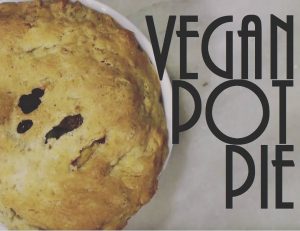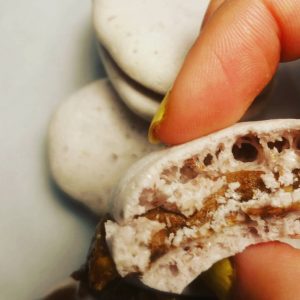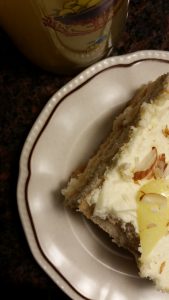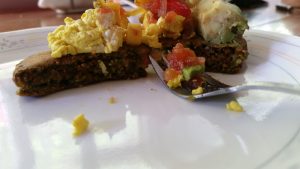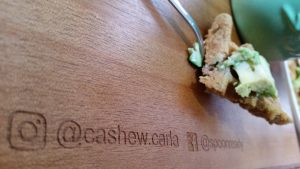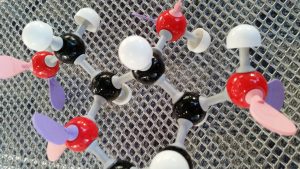March 09, 2017 ||
PASTA.
- use large amount of water to allow for pasta expansion (about 1L water per 100g pasta)
- when pasta reaches a boil, add 1 tbsp salt
- most of the salt will be drained away with water, but enough will remain on the pasta to season it efficiently
- add pasta slowly into boiling water
- cook, uncovered for the time on the package
- reduce cooking time by 1/3 if pasta will be combined with other ingredients and cooked further
- check for doneness by cutting with a gork
- should be tender with a slightly firm center (al dente meaning “to the tooth”)
- oil can be added after pasta is drained to prevent sticking
- rinsing with hot water can also prevent sticking, but it may wash away some of the water soluble nutrients
- generally, pasta expands two times its size after cooking
High Quality Cooked Cereal:
appearance:
- strands or pieces of pasta are clearly separated
consistency and texture:
- tender, yet firm. not soft, nor mushy
flavor:
- bland, may be tiny hint of egg flavor, if it was made with eggs or a slight nutty flavor is it is whole grain
Purchasing + Storage
- purchase in a location with a high turnover rate in order to get fresh pasta
- store in a cool, dry, dark place
- to prolong shelf life, you can store in fridge or freezer
types of pasta:
- fresh/egg noodles
- common in northern europe, in USA, most fresh pastas are made with eggs
- perishable and cook quickly
- have binding, tenderizing, distinct flavor and appearance
- dried durum pasta
- standard Italian pasta, made without eggs
- made from durum (semolina flour) which provides a distinct yellow color and flavor
- contains gluten proteins
- hard and glass interior of dried pasta
- limits loss of dissolved protein and gelatin starch in cooking
- drying: only takes about 2-5 hours
- stages: pre-drying, extended drying, resting periods
- high temps: can cause browning, damage to flavor
- Asian wheat noodles
- Chinese
- white and yellow noodles
- Japanese
- udon
- ramen
- somen
- Chinese
- Noodles without gluten
- rice, mung bean, sweet potato
- glossy, translucent
- high amylose
- rice, mung bean, sweet potato
- other types of pasta:
- couscous
- dumplings
- gnocchi
- common in northern europe, in USA, most fresh pastas are made with eggs
Al dente:
– characteristic bite and resistance found in perfectly cooked pasta
- center is slightly under cooked
- surface is about 80-90% water
- center is about 40-60% water
- well cooked pasta
- strands and pieces are separate
- tender, yet firm
- bland taste
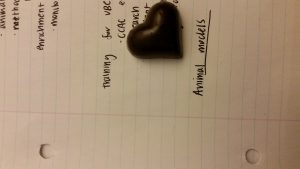
what happens when you cook pasta?
- protein network and starch granules expand and absorb water
- causes the outer layer to rupture
- starch dissolves in cooking water
- noodles are intact because center has starch granules
Tips in cooking pasta:
- tip1: cooking water
- pasta expands 2x when cooked
- absorbs 1.6 to 1.8 times its weight in water
- the remaining water will dilute the dissolved starch
- rule of thumb: add 10x more water than pasta and keep it at a rolling boil
- hard water: the ions will weaken the pasta surface
- alkalinity increases the stickiness and cooking loss
- tip: add acid such as lemon juice or cream of tartar
- tip 2: avoid stickiness
- during cooking:
- caused by noodles resting close together and gel at surface
- tip: constantly stir, lubricate w/ oil, add salt, toss with oil after cooking
- after cooking:
- caused by starch on surface cooling and drying to pot
- tip: moisten w/ sauce, oil, butter or cooled cooking water OR rinse with cold water
- during cooking:
What is a starch and how to use it to thicken a sauce:
– chains of glucose, made of amylose and amylopectin
– amylose: a few long chains, about 1000 glucose molecule
– amylopectin: many short chains, about 5000-10 000 glucose molecules. bulky.
how to make a sauce with starch…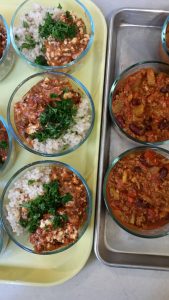
- starch granules absorb water and swell
- at 120-140F gelatination temp
- granules leak amylose and form a network
- this network traps the water and holds swollen starch molecules in place
- this thicken mixture
- as temp cools, mixture thickens more
- molecules move less
- amylose forms strong bonds
- water molecules settle
- mixture forms into a gel
How can you introduce starch into a sauce? (4 ways)
- through a slurry:
- mix starch with cold water
- separate starch molecules and fat “kneaded butter”
- flour worked into a paste with its weight in butter
- introducing starch early in cooking
- for example, dusting meat with flour, sauteing then adding to a stew
- roux
- preheat starch separate in fat
- heat equal weights of flour and butter in a pan
- can cook 3 ways:
- flour remains white, but moisture is driven off
- flour turns light yellow, moisture driven off
- flour turns brown, moisture driven off
Types of starches:
- grains
- wheat
- 75% starch, 10% protein by weight
- less efficient as a thickener, need to use 1.5x more
- cornstarch
- 100% starch
- very efficient thickener
- rice starch
- smallest, finest granules
- wheat
- tubers and root starches
- potato
- best thickening power
- fragile
- large
- large phosphate groups, which repel each other and prevents congealing
- tapioca
- large
- pre-gelatinized
- neutral flavor
- used in puddings
- large
- arrowroot
- potato
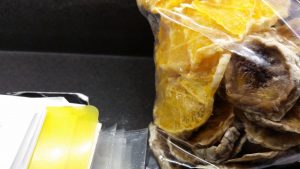
References:
McGee, Harold. On food and cooking. London: Unwin, 1986. Print.
…………………………………………………………………………………………………………………………………………………………………………………………………………………………………………………………………………………………………..
March 08, 2017 ||
Cereals + Rice:
Cereals:
Types of cereal…
- wheat cereals;
- wheat berries
- wheat germ
- wheat bran
- cracked wheat
- semolina
- couscous
- non-wheat cereals;
- oats
- millet
- barley
- sorghum
- teff
- corn
- spelt
- kamut
- pseudo-cereals(not from the grass family, but have similar characteristics to other cereals);
- quinoa
- buckwheat
- amaranth
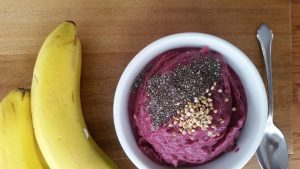
how to cook cereal:
NOTE:
Before cooking: when scaling down a recipe, you need to increase the amount of liquid you use. This is because when you scale it down, more water actually evaporates. This also applies to cooking rice.
Example: if a recipe says 250ml rice and 500ml of water, if you’re only doing 125ml rice, you will need more than 250ml water.
- on the stove top over direct heat; in a heavy pan.
- cook, stirring to prevent sticking- until it thickens (2-5 minutes)
- reduce heat and cover pot until cooked
- cook until there is no starchy flavor
- if too thick, you can add more boiling water until desired consistency
- taste for saltiness and adjust accordingly
COMMON MISTAKES:
- under cooking: a raw, starchy taste is present
- over-stirring: a thick, slick, glue like – sticky product
- under or over salting: only a small amount of salt is recommended to enhance natural cereal flavors; about 1 ml salt per 250 ml uncooked cereal
- If not eaten immediately, refrigerate. Cooked cereals are a great medium for bacterial growth.
- When refrigerating, add a thin layer of water on top of the cereal to prevent hard skin from forming
- To prevent lumping: do not stir until heated
Yields of cooked cereals: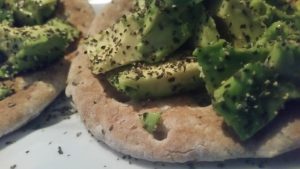
- fine, granular cereals swell 5-6 times
- coarse, cracked cereals swell 4 times
- flaked cereals swell 2 times
- this means more water is needed in fine, granular cereals than in flaked or coarse, cracked cereals.
High Quality Cooked Cereal:
appearance:
- characteristic color
- no skin on surface
- some form (particles, granules, or flakes)
consistency and texture:
- thick, but will flow enough to assume shape of dish
- no lumps or pastiness
- note: consistency may vary with amount of water used and by preference
flavor:
- bland
- taste of cooked starch
- typical taste of grain (ex. nut-like)
- properly salted
what to consider in ready-to-eat cereals?
- sugar (should contain less than 6g sugar)
- fiber (should contain more than 4g fiber)
- salt
- added (fortified) nutrients
Rice:
types:
- arborio
- basmati
- brown
- glutinous (sticky)
- jasmine
- long grain
- red
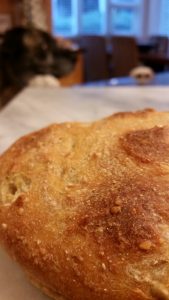
- valencia
- wild
cooking methods:
- steamed
- using a heavy pan with a tight-fitting lid
- do not wash rice from Canada/ USA (fortified with B vitamins)
- place rice in cold water or broth – about 500ml water to 250ml rice and about 2ml salt
- bring to a boil over medium heat, do not stir
- cover, reduce to low and simmer – with no steam escaping
- do not lift lid (steam and heat will escape)
- do not stir after it boils- this will make it very sticky
- general cooking timelines (watch rice carefully):
- white rice: 14-20 minutes
- converted rice: 25-30 minutes
- brown or wild rice: 40-50 minutes
- to test doneness: swish kernel between fingers- it should be tender with no bone in the center
- if water is left after cooked, take lid off and turn up heat to drain water
- let pot sit, covered 5-10 minutes before serving
- can be refrigerated for one week, frozen for 6 months.
- rice cooker:
- by manufacture instructions
- oven-baked rice:
- same proportions as steamed rice
- bake, uncovered at 350F for 30 minutes
- microwaved rice:
- same proportions as steamed rice, but using boiling water
- cook in covered casserole dish for 7 minutes (note: if you don’t use boiling water, it will be longer than 7 minutes
- let stand 5-10 minutes before serving
- especially useful for wild or brown rice because they take longer to cook
cooking yeild:
from 250ml of uncooked rice, rice expands about …
- 3-4x more for brown, wild or converted rice
- 3x more for white rice
How to re-heat rice (3 ways):
- place in a pan, with a little water and steam until warm (8-10 minutes)
- additionally, you can heat in double boiler for about 10 minutes
- place in microwave dish, sprinkled with water and microwave for 2-3 minutes on high
High Quality Cooked RICE:
appearance:
- characteristic color of type of rice (black, brown, red, white)
- long grains: fluffy, dry and separate grains
- short grains: moist, sticky and adhering
consistency and texture:
- tender, yet firm. No bone (firm core) in center
flavor:
- bland
- some may be nut-like if they are whole grain
References:
McGee, Harold. On food and cooking. London: Unwin, 1986. Print.
…………………………………………………………………………………………………………………………………………………………………………………………………………………………………………………………………………………………………..
February 20, 2017 ||
Bread. 
Ingredients:
- flour
- water
- salt
- yeast
- sugar
- fat
Flour Functions:
- typically best to use flours from high protein wheat
- this means it needs to been kneaded longer
Water Functions:
- acidic water, and soft water means weaker gluten
- alkaline water, and hard water means stronger gluten
Yeast Functions:
- if fermenting overnight, increase the amount of yeast
- longer rising results in a more advanced flavor
Salt Functions:
- strengthens gluten network via ionic interactions with gluten
- inhibits bacteria gluten digestion
Starters:
- these are portions of the dough that have already been fermenting, added to a new batch of dough
- maximizes fermentation and flavor
Sugar
- limit gluten development
- bind water molecules (to interrupt gluten-water network and slow large yeast growth
- faster browning
Fat
- weakens gluten network
How to make bread (Steps):
- Mixing: results in a “shaggy mess” of gluten-gluten attachments
- Kneading : gluten strands; elongate, unfold and align, overall producing a stronger gluten network and aeration – dough is stretched and folded
- Rising and Fermentation: Yeast cells produce Co2 which diffuse into air pockets and inflate them. Gluten orientation continues through slow stretching.
- Temperature: Higher temps produce more Co2 from yeast, and ultimately result in a more sour, undesirable product. Lower temps require an increased fermentation time, but will result in a more flavorful product.
When is fermentation over?
- when dough is doubled in size
- when you poke the dough, it doesn’t spring back because the gluten has been stretched to its elasticity limit
Why may you want to refrigerate your dough?
- slows down microbe activity
- makes yeast more flavorful
- gases redistributed through warming and cooling, creating a more open and irregular structure
- more still dough, easier to handle
Baking and Cooling Bread:
- oven spring (vaporization of h20 and alcohol)
- foam to sponge
- flavor and cooking
- cooling
How to Store Bread:
- starch retrogradation (staling)
- increases when stored in fridge
- to temporary reversed by heating bread
- to completely stop: add emulsifying agents to your bread (egg yolks)
References:
McGee, Harold. On food and cooking. London: Unwin, 1986. Print.
…………………………………………………………………………………………………………………………………………………………………………………………………………………………………………………………………………………………………..
February 19, 2017 ||
In a Pastry…
- flour
- fat
- water
- eggs
- dairy
Differences from Pastry to other baked goods …
High fat to water ratio
Little to no sugar
No chemical leaveners
creates a tender and flaky, crumbly product
flavor can be bland or buttery
Techniques:
- fat cut into flour
- lamination
- low gluten development
A primary component of the pastry is that the structure is divided by layers of fat
Pastries are important because they were previously used as a container for preservation, but today are often used as a container for sweet or savory fillings
Flour function: volume and structure to get crumbly pastries... use low protein flour to get flaky pastries ... use moderate protein flour to make sheet pastries ... use high protein flour
Fats Function: richness, moisture and flavor - you want to ensure that you are aware that different fats will have different moisture contents. This can result in a variety of textures that may or may not be desirable.
Water, Eggs and Dairy Water Function: to bind particles Eggs Function: to add moisture and richness to create a cohesive dough Dairy Function: can replace water for flavor, can increase browning reactions
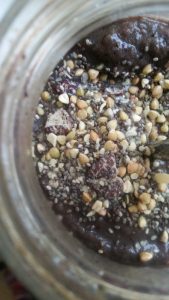
How to make pastries?
- mixing provides lamination, involves cutting and rubbing
- rolling and shaping which varies between pastry styles
- resting
- temperature control
- baking (and blind baking)
- sealing
Types of Pastries:
1.Crumbly Pastry
- tender
- egg for stability
- fat is dispersed finely into dough
- any type of fat can be used
- best to use a low protein flour
example: quiches, pies
2.Flaky Pastry
- tender and flaky texture
- delicate, often served from pan
- fat added in 2 stages
- use solid fat with low water content (shortening)
- best to use moderate protein flour
example: american style pie pastry
3.Laminated PUFF PASTRY
- flaky texture
- many layers of fat and dough
- includes:
- true rolling, with no fat
- quick rolling with fat
- use solid fat with low water content
- best with moderate protein flour
4. Laminated SHEET PASTRY
- individual pastry sheets with individual layers of dough
- extremely flaky
- stretch dough to develop gluten
- can use any fat
- best with high protein flour
examples:
phyllo: stretched and layered
strudel: stretched and wrapped
5. Laminated Bread
- variation of laminated pastry
- rich bread dough, layered with fat
- involves rolling and folding, with minimal kneading
- requires a solid fat with low water content
- best with moderate protein flour
example: croissants, danishes
6. Hot water Pastry
- tender and savory
- more water than other pastries
- sturdy, therefore can hold more juices
- water and lard heated near boil
- flour added to create a homogeneous mixture
- rest, cool then roll into shape
example: meat pies, meat pates, wellington
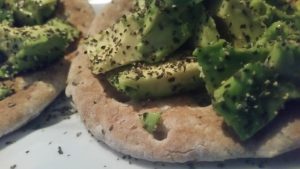
Leavening Agents:
- generally involves steam or yeast
References:
McGee, Harold. On food and cooking. London: Unwin, 1986. Print.
…………………………………………………………………………………………………………………………………………………………………………………………………………………………………………………………………………………………………..
February 15, 2017 ||
The basics in cooking: Heat
Heat Transfer:
the idea that when something heats up, molecules move and the faster they move, the more they collide and the higher the temperature gets.
Types
- Conduction
- where two substances need to be in contact in order to transfer heat
- For example: a pot touching touching the interior water. The water heats up via direct contact with the hot pot
- where two substances need to be in contact in order to transfer heat
- Convection
- where heat is conducted through currents
- For example: you can think of heat transfer of water (think of a pot of water at a rolling boil). When the water molecules are close to the heat surface, they heat up and move away to the top, as the molecules on the top cool (as they are away from the heat source) they begin to sink, back down to the heat source).
- where heat is conducted through currents
- Radiation
- this is the heat transfer via waves
- For example: think of a camp fire. You can sit beside the fire and feel the heat, yet you are not touching the fire. The heat is being admitted through the waves of heat which you are feeling.
- this is the heat transfer via waves
- Induction (NEW)
- this is a type of heat transfer that involves electromagnetic radiation. It requires pans that have magnets.
- this is useful because with induction heat transfer, most of the energy particles are transferred your product as they do not have to go through a “middle ground” conversion step to get to your product.
- heat is CONDUCTED from the pot to the contents
- for example, this would be a new type of stove molecule that uses induction heat transfer, and requires the use of magnet pots.
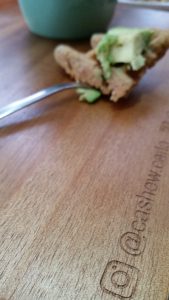
How can heat be transferred?
- air
- steam
- fat
- water
Cooking Methods of heat transfer
- dry cooking methods (air and fat)
- deep frying
- pan frying
- roasting
- baking
- barbecuing
- grilling
- sauteing
- toasting
- moist heat methods (water and steam)
- steaming
- boiling
- stewing
- poaching
- simmering
- combination methods
- braising (cooking in a fat -dry- then stewing -moist-)
Boiling points
Is the boiling point for water always 100 degrees Celsius?
No. Boiling point is affected by atmospheric pressure. When atmospheric pressure increasing, boiling point increases.
Boiling point is when atmospheric pressure = vapor pressure 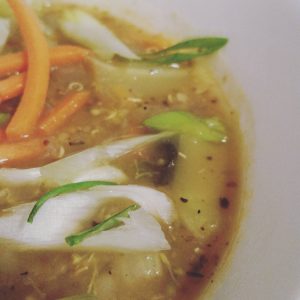
in Vancouver (or at least most parts of Vancouver) the boiling point of 100 degrees Celsius is when atmospheric pressure is 1.
- this concept is important because…
- we want to maintain certain temperatures
- we need to understand that when pressure decreases or elevation increases, this will affect cooking temperatures and boiling points
- ex. in Whistler, the atmospheric pressure is lower, because elevation is higher.
- this means that in Whistler, water will boil at a lower temperature than 100 degrees Celsius : higher elevation, lower pressure, lower boiling point
References:
McGee, Harold. On food and cooking. London: Unwin, 1986. Print.
…………………………………………………………………………………………………………………………………………………………………………………………………………………………………………………………………………………………………..
February 12, 2017 ||
Did someone say colloid?
Colloid systems:
- two substances, a continuous phase and a dispersed phase that do not mix, but get together – do not for a solution
- many types
- sol (lypophilic)
- continuous phase: liquid
- dispersed phase: solid
- gel (lypophilic) ex. jello
- continuous phase: solid
- dispersed phase: liquid
- emulsion ex. milk
- continuous phase: liquid
- dispersed phase: liquid
- solid emulsion ex. butter
- continuous phase: solid
- dispersed phase: liquid
- foam ex. whipped cream
- continuous phase: liquid
- dispersed phase: gas
- solid foam ex. whipped cream
- continuous phase: solid
- dispersed phase: gas
- sol (lypophilic)
- when thickening a substance, you must use heat. After heated, the liquid left is cooled and forms a network that traps air.
- protein and starch can be used to form a sol or gel
- foams are weak and sensitive to breaking easily, compared to other colloidal systems
- making a foam:
- beat in air
- albumen proteins (in eggs) break and unfold which traps the air
- if egg white is heated, protein coagulates, moisture is driven off and foam stabilizes
- making a foam:
References:
McGee, Harold. On food and cooking. London: Unwin, 1986. Print.
…………………………………………………………………………………………………………………………………………………………………………………………………………………………………………………………………………………………………..
February 11, 2017 ||
Milk and Dairy
Main proteins in milk:
- casein (functions for acidification and coagulation in milk)
- whey (remains suspended in liquid, vital for influencing curd texture of casein protein)
All milks are dominant in casein EXCEPT human breast milk, which is mainly composed of whey proteins.
- very important in milk
- is composed of two major groups of lactic acid bacteria:
- lactobacillus
- streptococcus
- both of which are heat loving thermophiles! They are also used in making cheese, along with another bacteria: lactococci.
- people who are lactose- intolerant are missing the enzyme: lactase, which breaks down lactose in the body
- lactose – free milk already has the enzyme lactase in it, therefore making it suitable for people unable to digest lactose
Fresh Fermented Milks:
- Yogurt; from the Middle East and India
- two basic steps to make:
- 1. heat the milk and partly cool
- 2. ferment warm milk
Yogurt:
it used to be required to scald the milk before making yogurt for sanitary purposes. These days, if you decide to make your own milk, heating (and scalding) the milk is still a practice, but not necessarily for the sanitation purpose. Nowadays, we often scald the milk in order to denature some of the whey proteins present, which ultimately results in a better textured yogurt.
Tips in yogurt making:
to prevent the proteins from sticking to the bottom of your pan when heating milk in yogurt making you can…
a. put some water in the pan before adding milk (reducing protein adhesion)
b. using a heavy, evenly conducting pan and moderate flaming
c. using a double boiler
Flavors of yogurt:
Yogurt can have a variety of flavors, through flavor additives in processing and by natural products. Some things that may be added to yogurt to change flavors include:
a. furans: give a sweet, floral flavor
b. diacetyl: give a buttery flavor
c. acetic acid: provide a vinegar- like flavor
d. acetaldehyde: providing a “green apple” like flavor
e. lactones: providing a coconut or peachy flavor
- Buttermilk; from Eurasia
- true buttermilk: low fat portion of milk remaining after making butter which would already have previously been fermented and devleoped a nice flavor
- true buttermilk: less acid, more flavor and more prone to spoiling
Buttermilk: true buttermilk is made from the very low fat portion of milk or cream after making butter. It is often pre- fermented naturally through the butter- making process. As well, true buttermilk often has some remnants of fat globules from milk, which are rick emulsifiers.
In the late 19th century, new technology began being developed, which lead to butter being produced with a more sweet flavor. Then, slowly the butter was not fermenting and a new “buttermilk” was made. This un-traditional buttermilk, (the un-true buttermilk) found in grocery stores today, is made form skim milk and is fermented with added acid until it develops a thick texture. The buttermilk today, the un-true buttermilk is often more acidic and less flavorful.
Additionally, true buttermilk is often pre-fermented from the butter-making process. This means that true buttermilk still contains some fat globules. These fat globules are great emulsifiers.
- Creme Fraiche; from Europe
- Sour Cream; from Europe
- essentially a leaner and more firm version of creme fraiche
- high protein content, and 20% milk fat makes it an ingredient to be used cold- heating will generally result in curdling
- Ropy Milk; from Scandinavia
- a stringy milk, often very cohesive and requires a knife to cut
- Koumiss; from Central Europe
- Kefir; from Central Asia
References:
McGee, Harold. On food and cooking. London: Unwin, 1986. Print.
…………………………………………………………………………………………………………………………………………………………………………………………………………………………………………………………………………………………………..
February 10, 2017 ||
Eggs…
A Simple, and nutritious food. As versatile as they are, have you ever given thought to what they actually do in your recipes? Do they function the same in CAKES as they do in CUSTARDS?
Egg uses:
Eggs really have a variety of uses. They can do many things in a number of recipes. It is important to be aware of what function eggs have in each recipe, and have a good idea of some potential egg substitutes for each egg function.
- Appearance: eggs can function in making a baked product look glossy. Here, eggs can be substituted with butter or margarine.
- Flavor: they have a number of different compounds, creating a distinct egg flavor. Egg whites tend to have a sulfur flavor, while egg yolks have a buttery flavor. Here, you can sub eggs with a vegan egg or tofu.
- Structure: think of a lemon meringue pie. Egg whites add structure, after being whipped. When whipped, air is incorporated and bonds form, ovmucin (an egg protein) helps stabilize bonds, therefore stabilizing form and structure. Here, eggs can be substituted for aquafaba.
- Leavener: incorporating air, creating a “steam jump” within final product. A substitute can be baking soda, baking powder or an egg replacement.
- Fluid Volume: Egg yolks and egg whites both consist largely of water. Some substitutes would be milk, cream or water.
This is important in things such as eggnog. Egg yolks and egg whites are composed primarily of water. This contributes a lot of fluid to dishes and drinks.
A substitute could be water, milk or cream
- Texture: similar to egg’s function in structure, texture of eggs is specific to the dish. A possible substitute would be aqufaba.
- Tenderizer: egg yolks have a variety of fat compounds, which can be substituted for other fats in a recipe.
- Emulsifier: looking back on dressings, an emulsifier helps two immiscible liquids come together. Eggs work well as a protein molecule, and from the phospoholipid lecithin. This can be substituted for other emulsifiers such as casein or soy lecithin.
- Clarifying Agent: when water is boiling, and you whisk in an egg (for example, when making consomme or wine. This can be substituted for casein, bentonite or gelatin.
- Thickener : can be substituted with corn starch
Thickeners are important in may dishes, including custards.
Here, coagulation temperature is an important consideration. Generally, coagulation temperature is between about 79-84 degrees Celsius. That being said, egg whites and egg yolks often coagulate at different temperatures.
Egg whites: between 60-65 degrees Celsius
Egg Yolks: between 67-70 degrees Celsius.
- Sealing Agent: important in pastries, to prevent a soggy texture and to prevent interior contents from coming out. This can be substituted with butter, or milk mixed with flour.
- Setting Agent: important when making custards or cheesecakes. Can be substituted for soft tofu.
- Binding: holds ingredients together and provides strength and stability in final product. You can substitute the eggs here, with a banana, flax or chia egg and also wheat or potato starch mixture
Custards/ Setting Agent:
- to prevent milk from curdling in these thick, custard desserts (which are often heated), you can add a starch or flour.
- general rule of thumb is about 1 tbsp starch per cup of liquid (eggs, cream etc.)
- you can also use this starch method when using heated milk based sauces, such as hollandaise sauce
- chocolate and cocoa can be used to stabilize as it contains starch
Cheesecakes:
- are actually considered a starch, but often not recognized as one because of the higher proportion of sugar (about 4 tbsp sugar/ cup liquid vs. typical custards averaging about 2 tbsp/ cup)
- common cheesecake problems:
- depression in surface
- cracks in surface
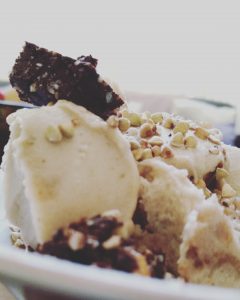 how to minimize depression and cracks in cheesecake surface
how to minimize depression and cracks in cheesecake surface
- beat ingredients only slowly and gently (vigorous beating incorporates air bubbles that will fill with steam and expand in baking, creating cracking)
- bake cheesecake slowly in low oven (allows trapped air to disperse and release evenly)
- don’t over bake (custards are best when baked until slightly jiggly in center)
- cool cheesecake gradually in oven (gives sufficient time for trapped air to escape, slowly)
Water baths:
- good to use because the water does not exceed 100 degrees Celsius (the boiling point of water, where it will not exceed this temp until everything converts to vapor)
- the actual temperature of the water in water bath may vary as much as 40 degrees Celsius, depending on dish used
- cast iron pot: approx. 84 degrees Celsius
- glass: approx. 83 degrees Celsius
- stainless steel: approx 80 degrees Celsius
Foams: 
Another important note when using eggs for foams is to consider things that will weaken or strengthen your foam, depending on your recipe and desired product outcome.
Salt generally weakens a foam and is something you should keep away from a foam.
When whipping egg whites, it is also important to ensure no fat, egg yolk or dish detergent came into contact with the egg whites, which all may prevent foam formation.
Sugar can both weaken and strengthen a foam, depending on the time of addition. If you add sugar before whipping your egg whites, this will weaken your foam. If you add sugar after you whip and get soft peaks, this will strengthen your foam!
Water; in small amounts can strengthen your foam, as well as increase volume.
To prevent foam separation in final product:
- add thickening agents (starch, flour)
- if you do not want to change the flavor of the product by adding starch, you can work with the ovalbumin (protein) in eggs
- ovalbumin (main protein in egg whites)
- relatively immune to beating therefore relatively useless in raw egg form
- it is sensitive to heat
- when raw egg white is cooked, ovalbumin doubles the reinforcement of eggs
- also it allows excess moisture to evaporate, leaving the liquid to be into a stable solid
Eggs and copper:
- unlike many other metals, copper can form extremely tight bonds with sulfur groups – preventing the sulfur from interacting and bonding with anything else
- this means that by using copper with egg whites, the foam will stay glossy and never become grainy due to the fact that no other bonds can form with the sulfur groups in the eggs
- similarly, without having to pay the expensive price of using a copper bowl (or copper powder) you can keep your eggs glossy and foamy, by using a small amount of acid
- approximately 1/2 tsp per 1 egg white
References:
McGee, Harold. On food and cooking. London: Unwin, 1986. Print.
…………………………………………………………………………………………………………………………………………………………………………………………………………………………………………………………………………………………………..
February 08, 2017 ||
Sugar, Sweeteners and Substitutes
Three Basic Types of Sugar:
Glucose: This is the building block of life. It is essential for energy and body process’s.
Fructose: Found in similar foods as Glucose, such as fruits. It is heat unstable, so it’s good for cold- sweetened beverages. It is also the most desirable for diabetics.
Sucrose: Also known as table sugar. This has a lingering sweetness, and is made of 50% Glucose and 50% Fructose.
What is Sugar used for?
- to add sweetness to a variety of foods
- to mask bitter or sour flavors
- enhance food aroma
- creates tenderness in baked goods
- locks moisture into baked goods
Sugar substitutes and HFCS:
Intensive sweeteners include: Splenda, Stevia, Sweet N’ Low and Aspartame. Most intensive sweeteners are sweeter than sugar, so they can be used in smaller amounts than regular sucrose.
Sugar Alcohols: (sugar substitutes ending in -itol)
- provide bulk, less kcals (because the body cannot fully digest it)
- do not partake in browning reactions
High intensity sweeteners: high sweetness and low kcal
- often sweeter than sucrose, which means you can use smaller amounts, therefore leading to less kcal consumption
- they do not have the ability to partake in the same reactions as sugar, leading potentially odd aftertaste, and slow registration of sweetness
Canadian Diabetes Association (CDA) and recommendations for Diabetics and sugar intake:
- diabetics can have up to 10% of kcals of a mixed diet coming from sugar (sucrose), eaten with other foods.
- for example, it is not recommended for diabetics to eat sugar on its own, but having a (real sucrose) sugar cookie after dinner is okay in moderation.
Approximate conversion factors for sweeteners vs. sugars:
Stevia: 1tsp : cup sugar
Splenda: 1/4 tsp : cup sugar
Sweet N’ Low: 7tsp : cup sugar
Aspartame: 24 packs : cup sugar
Aspartame is HEAT UNSTABLE. This means that it is great to use aspartame in things such as iced tea or lemonaide, but it is not as useful in hot coffee drinks or hot cocoa.
Something else to keep in mind when using sweeteners to replace sugar is the bulk factor. If using splenda, for example, you may need only 1/4 tsp of splenda per 1 cup of sugar. This means you loose a lot of bulkiness within your recipe, which could change the product outcome. Try substituting various ingredients to get the bulk factor back.
Natural sugar substitutes include: Honey, Agave Nectar, Bananas, Fruit Concentrate, Syrups and Molasses.
Often, with liquid sugar substitutes, when substituting the sugar in a recipe with a liquid substitute, you need to decrease the amount of liquid in the recipe by 1/4 cup per 1 cup of sugar. As well, it may require a decrease in cooking temperature, an addition of about 1/4 tsp baking soda per cup of sweetener and keep in mind that when substituting a liquid sweetener for sugar, you may only need about 1/2 cup – 2/3 cup liquid sweetener : cup sugar.
Some potential benefits of using Honey instead of sugar:
- honey, as a liquid, may have the added benefit of keeping your baked goods moist (but recall the tip to decrease liquids in recipe when substituting sugar for a liquid sweetener)
- antioxidant phenol compounds present in honey may reduce staling in baked goods
- honey is acidic, meaning it will react with baking soda to quickly leaven breads and baked goods
- contains reactive, reducing sugars which accelerate browning reactions for desired color and flavor
Note:
- it may be easier to produce honey, true maple syrup, and agave as opposed to natural cane sugar because..
- liquid sweeteners are taken directly from plants and trees and often don’t contain a lot besides the water and the sugar
- cane sugars, and other solid sugars are often mixed with tannins, pigments and more that causes it to require a refining process
HFCS: High Fructose Corn Syrup – Something to keep in mind…
HFCS can be found in a few varieties, the most commonly used is HFCS 55. This has 55% Fructose, which worries many people and causes them to stay away from it. In reality, HFCS is not much different in terms of composition of sugar then regular table sugar: surcose. So, you can decide for yourself if this needs to be completely avoided and cut out, or is okay in moderation!
Invert Sugar:
- when sucrose is heated and mixed with an acid
- what forms is a syrup that is 75% glucose and fructose, 25% sucrose
Caramelization:
- heat transforms odorless, colorless, sweet sugar into a variety of compounds and turning it a dark brown color with different aromas
- how?
- mix sucrose (table sugar) with water and boil
- boil until all water has boiled off (keeping at a moderated heat to prevent burning the sugar)
- we boil until all the water is boiled off in order to enter a phase change
- when caramel color has been established, quickly transfer to a water bath to avoid over heating which may result in a bitter flavor
- how?
Tooth decay related to consuming sugars?
- streptococcus (which we see in the making of yogurt and cheese) is a bacteria that feeds on starches in the mouth which can be from foods that contain the starches
- eventually, plaque buildup with improper oral healthcare can lead to tooth decay as the streptococcus feeds on starches
- some potential tooth decay inhibitors include:
- chocolate
- coffee
- tea
- cocoa
- cheese
References:
McGee, Harold. On food and cooking. London: Unwin, 1986. Print.
…………………………………………………………………………………………………………………………………………………………………………………………………………………………………………………………………………………………………..
February 05, 2017 ||
What is GLUTEN? And it’s functions in flour. 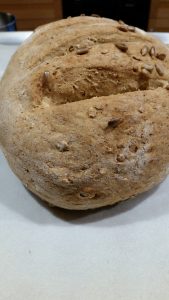
Gluten, it has been a very popular word over the last few years. I too, have tried “gluten free living” for a while (because why not, right?) but no longer follow it. I enjoy all foods (in a vegan diet) within moderation. During a similar time frame of gluten being a hit new diet, some news about celiac disease had started appearing. This is a very real, very serious digestion disorder, where your body is unable to absorb MANY nutrients due to the inability to absorb gluten. It comes with a variety of symptoms, differing for each individual. It requires a life long gluten free life.
But what is gluten?
Gluten is a PROTEIN made up of Glutenin (providing elasticity by combining sulfur groups of adjacent proteins and interacting with oxidizing agents) and Gliadin (providing plasticity) .
Elasticity:
This is the proteins and flours ability to convert back to its original shape after it has been stretched.
Plasticity:
Is the ability for the gluten and the dough (or batter) to stretch and form shapes without breaking.
Gluten is a primary protein in a variety of grains and has many important functions in flours. In flour, it provides elasticity and plasticity to dough’s, batters and dishes. An important step in developing gluten is kneading. If you’ve ever made a bread, you might know what kneading is. It is essentially three steps, where you take your dough, press and turn it a few times. Without sufficient kneading, your gluten may be under developed and you may get a dough with an uneven distribution of air bubbles. Kneading is important as it helps properly align and arrange gluten molecules into a desired orientation for rising.
Do all flours have the same amount of gluten?
No.
Flours that are low in gluten:
- cake flour, pastry flour and all purpose flour: these are great to use in recipes that you want a tender, baked product
- instant flour: this is great to use when your desired product should be tender (such as in pastries), also great to use in thickening sauces
Flours that are great for those gluten-free or people in your lives:
- teff
- millet
- sorghum
- buckwheat
- quinoa
- rice
- amaranth
- corn
A general rule of thumb is that the higher the protein content of a gluten containing flour, the higher the proportion of gluten. For example, whole wheat flours are higher in protein than all purpose, white flours. This means that whole wheat flours have LESS gluten than white, all purpose flours.
Gluten within a dough can be minimized by minimizing mixing (which develops gluten) and adding some acids (such as vinegar, sour cream or buttermilk) or adding some cornstarch.
That being said, gluten is NOT a bad protein. It is only harmful to people with celiac disease, and otherwise does not need to be avoided. If you think you may have celiac disease, it is best to go get tested instead of eliminating gluten from your diet.
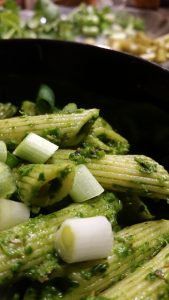
What else is in flour besides GLUTEN?
- Gluten: Elasticity and Plasticity
- Starch : This is important for providing volume, structure and tenderization to the dough or batter
- Enzymes: Important for feeding the bacteria. The sugars within the flour are only sufficient to feed the bacteria for a short period of time. Enzymes extend the period of time for feeding bacteria
- Fats: Though there is only minimal fat within flour, it is still important for enhancing tenderzation, stabilize cell walls, prevent pre-mature cell wall rupturing and increasing the shelf life by decreasing staling.
On the topic of flours, we can discuss a few types of dough’s and batters.
First of all, what is the difference between a dough and a batter?
Dough: Have about 2-4x less water than batters. The water they do contain is often bound, not free. Also, dough’s can be manipulated and mixed by hand, whereas batters are pour able.
Some common types of Dough and Batters:
- Cakes
- Muffins
- Biscuits
- Cookies
- Quick breads
- Griddle cakes: pancakes, waffles, wafers and crumpets
- Crepes
- Popovers
- Cream Puffs
- Fried Dough’s
—–> Cakes:
These are often THICK batters. They use a variety of ingredients, including eggs, milk, sugar, flour and oil.
The Cake Method:
Traditional (dense cake) vs. Quick (soft cake)
Steps:
- cream your plastic (solid) fat
- mix in vanilla and sugar
- mix in your eggs
- mix dry ingredients in a separate bowl
- mix wet ingredients in a separate bowl
- alternate adding the wet and dry ingredients into the fat- sugar- egg mixture. End with your dry ingredients
- mix only until incorporated, ensuring not to over mix.
Quick method:
- sift dry ingredients
- add fat, liquid, vanilla extract and stir
- beat in eggs with remaining wet ingredients, beat for 2-3 minutes
Cakes can use a variety of leaveners, including chemical leavening agents such as baking powder and baking soda
What would happen if you were to substitute oil for butter in your blueberry cake?
- often, cakes utilize plastic (solid) fats, such as butter or margarine
- this is important for air bubble expansion and ultimately resulting in a lighter, airy product
- when you substitute oil for your plastic fats, your end product will likely be more dense, because of the oils inability to help air bubbles rise and the reduced mechanical leavening
—–> Muffins
Thick batters, often requiring pouring. It is important to ONLY mix muffin batter minimally to decrease the amount of gluten development, in order to create a soft, tender product.
The Muffin Method:
The muffin method is often used for quick breads such as biscuits, biscottis and scones. It uses a chemical or mechanical leavening agent.
Steps:
- mix dry ingredients
- mix eggs with liquid fat
- add liquid mixture into dry mixture and blend just until dry ingredients are moistened.
—–> Biscuits
Steps:
- cut solid fat into dry ingredients until you get approximately ‘rice particle’ sizes of dough
- add liquid ingredients all at once
- stir dough until there are no more dry particles
- knead dough 15x
- roll out dough and cut into desired shapes
You cut your fat in, in order to minimize gluten development and produce a flaky, tender product
—–> Cookies
use air bubbles and baking soda as a leavener, they are high in SUGAR and low in WATER.
there are a variety of cookies including bar, box, drop, rolled.
basic ingredients: sugar (provides crispiness), fat (provides chewiness) and eggs (which provide a cakey texture).
References:
McGee, Harold. On food and cooking. London: Unwin, 1986. Print.
…………………………………………………………………………………………………………………………………………………………………………………………………………………………………………………………………………………………………..
February 02, 2017 ||
A “How to” on: Making your own sauces and dressings…
Making your own Dressings is not only easy, but it’s cheap and delicious. It allows you to try new things and experiment. Besides all that, the best news yet is that even if you ‘break your sauce’ you can repair it, no problem!
There are three basic rules to follow when making your own sauces and dressings. but first we need to understand the basic science behind what goes into dressings. Salad dressings for example, are usually a mix of something with water (continuous phase, maybe a balsamic vinegar) and an oil (the dispersed phase, maybe olive oil). As well, dressings usually have some sort of emulsifier, allowing the two phases to mix. This is necessary because normally water and oil DO NOT mix. due to oil’s hydrophobic (water hating) properties. If you want your dressing to remain emulsified, and not split into water and oil, you can also add a stabilizer, to hold a stable emulsion. This can be something such as a starch, some pulverized plant tissue, or mustard.
When making a dressing, it is best to add your continuous phase into the bowl first. Then, add your emulsifier, for example egg yolk or soy lecithin. Next, add your dispersed phase. Mix and enjoy.
What about the three basic rules?
- Add your continuous phase FIRST. If you add the dispersed phase first, you will have a hard time dispersing your continuous phase.
- Add the dispersed phase gradually. This is important because normally, these two phases would repel each other, so adding slowly will help them disperse more evenly.
- Keep note of the proportions of the continuous and dispersed phases. The volume of the dispersed phase shouldn’t be more than 3x the volume of the continuous phase. For example, adding 1/3 cup of vinegar to 1 cup of olive oil!
I BROKE MY DRESSING, NOW WHAT?
Don’t panic! Breaking emulsions is a common situation and it can easily be fixed, two different ways.
- Blend all ingredients together- your emulsion should be repaired!
- Prepare another continuous phase, mixed with an emulsifier and a stabilizer. Mix slowly into the broken emulsion. Your emulsion should now be fixed!
Remember to not heat your emulsified sauce too high, not to cool it too low and to have fun!
References:
McGee, Harold. On food and cooking. London: Unwin, 1986. Print.
……………………………………………………………………………………………………………………………………………………………………………………………………………………………………………………………………………………………………..
